Abstract
Tris(hydroxymethyl)aminomethane (Tris, Tromethamine, THAM) and other non-amphoteric amines were previously reported to inhibit the conversion of proparathyroid hormone to parathyroid hormone in bovine parathyroid glands incubated in vitro. This inhibition correlated with a striking dilation of the Golgi complex. This work has now been extended to normal, hyperplastic, and adenomatous parathyroid glands from human subjects. The tissues were incubated for up to 3 hours with 3H-leucine in physiologic solutions (control) or in the same solutions containing 50 mM Tris. In one case, diethylamine also was tested. Electron microscopy revealed that the amines produced a dilation of the Golgi complex and swelling of vesicles, predominantly in the region of the Golgi zone. Other organelles were normal in appearance. During the same period, Tris reduced by sixfold the ratio of the parathyroid hormone to proparathyroid hormone, from a control value of 2:1 to 1:3. It was apparent that Tris exerted the same biochemical and morphologic actions in human parathyroid tissues as it was previously shown to do in bovine glands. These studies support the concept that the Golgi zone is that region in the parathyroid gland in which proparathyroid hormone to parathyroid hormone conversion is initiated and that Tris inhibits this conversion through disruption of the converting site.
Full text
PDF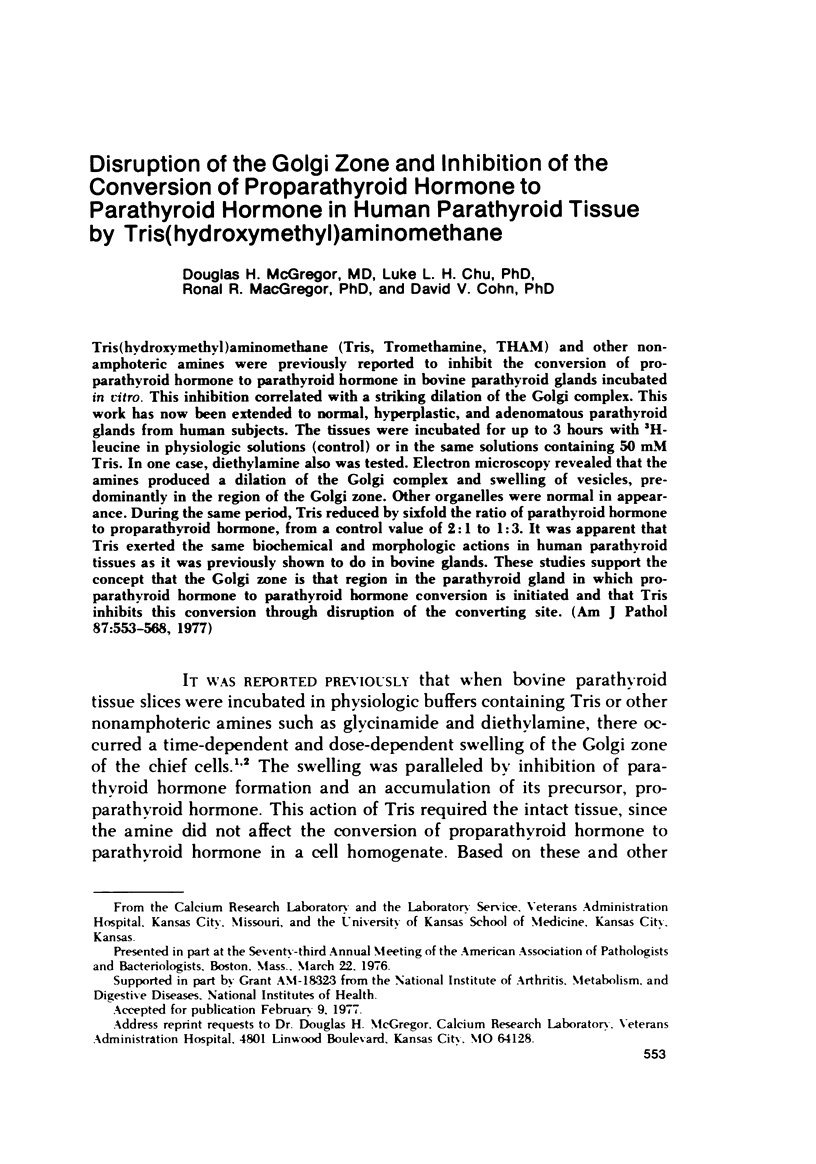
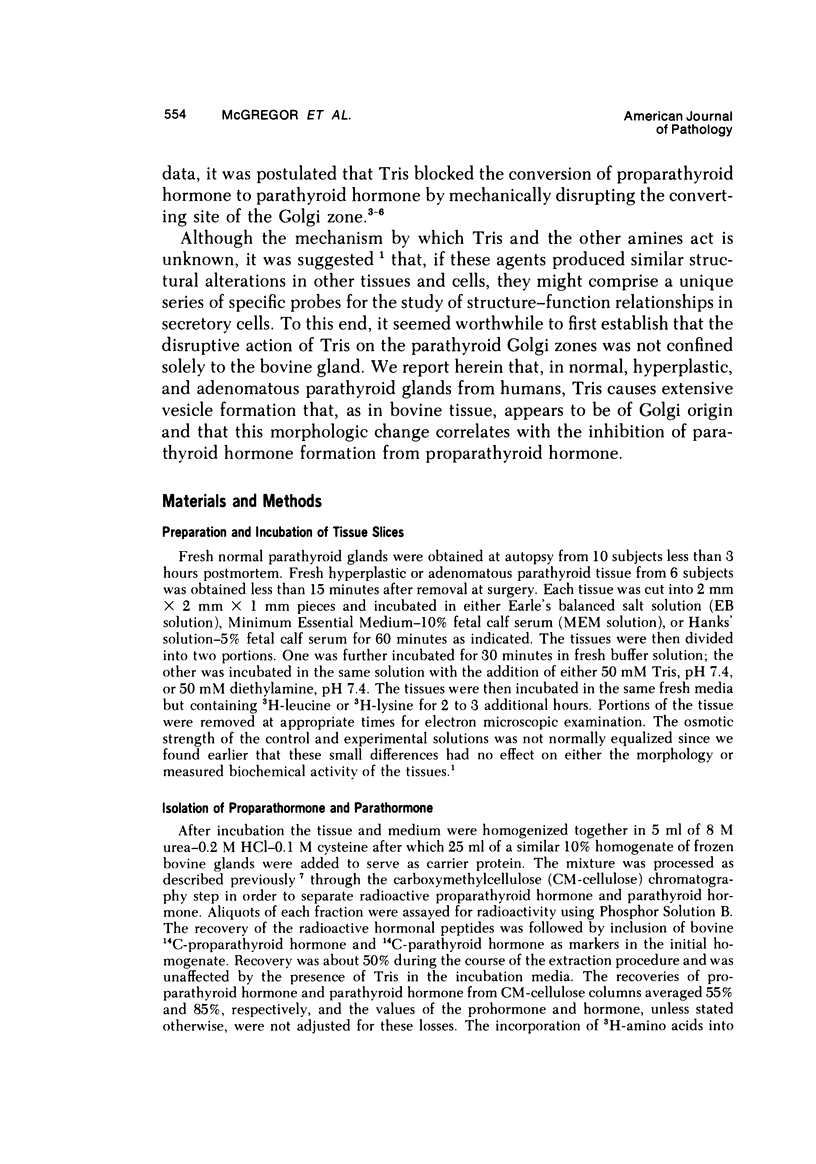
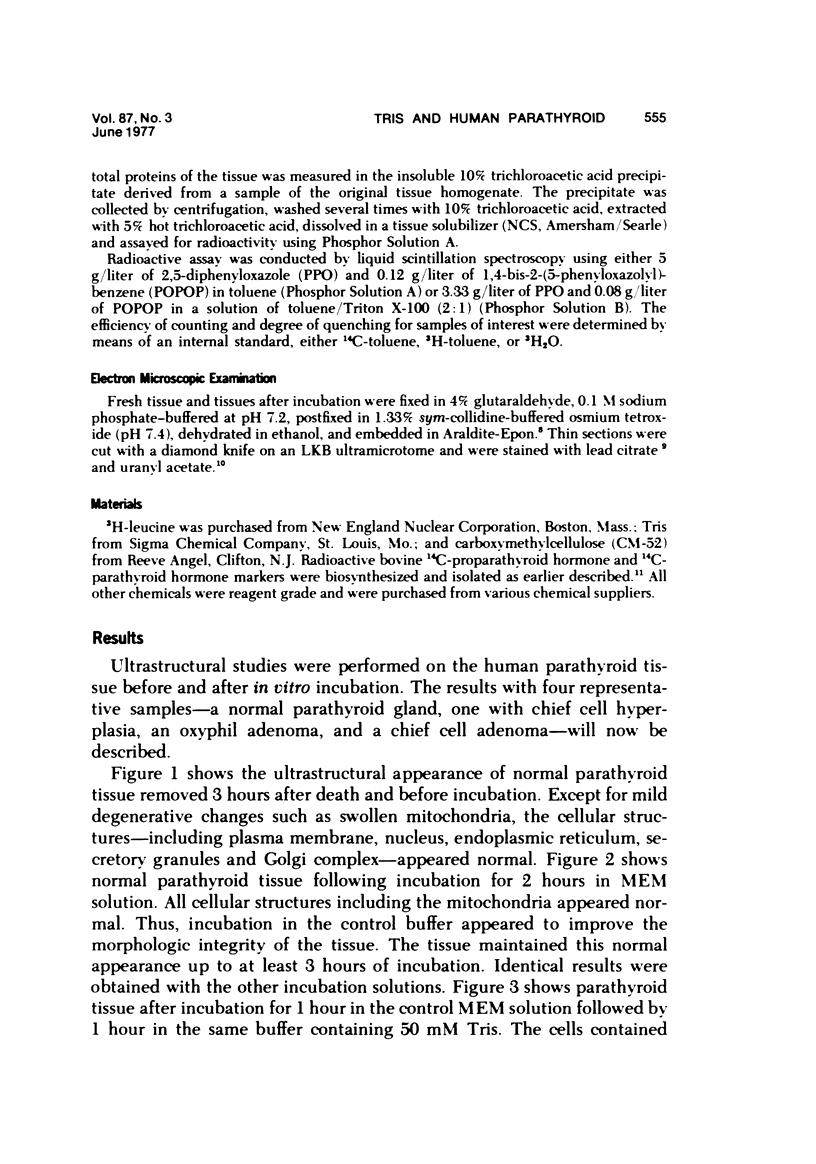
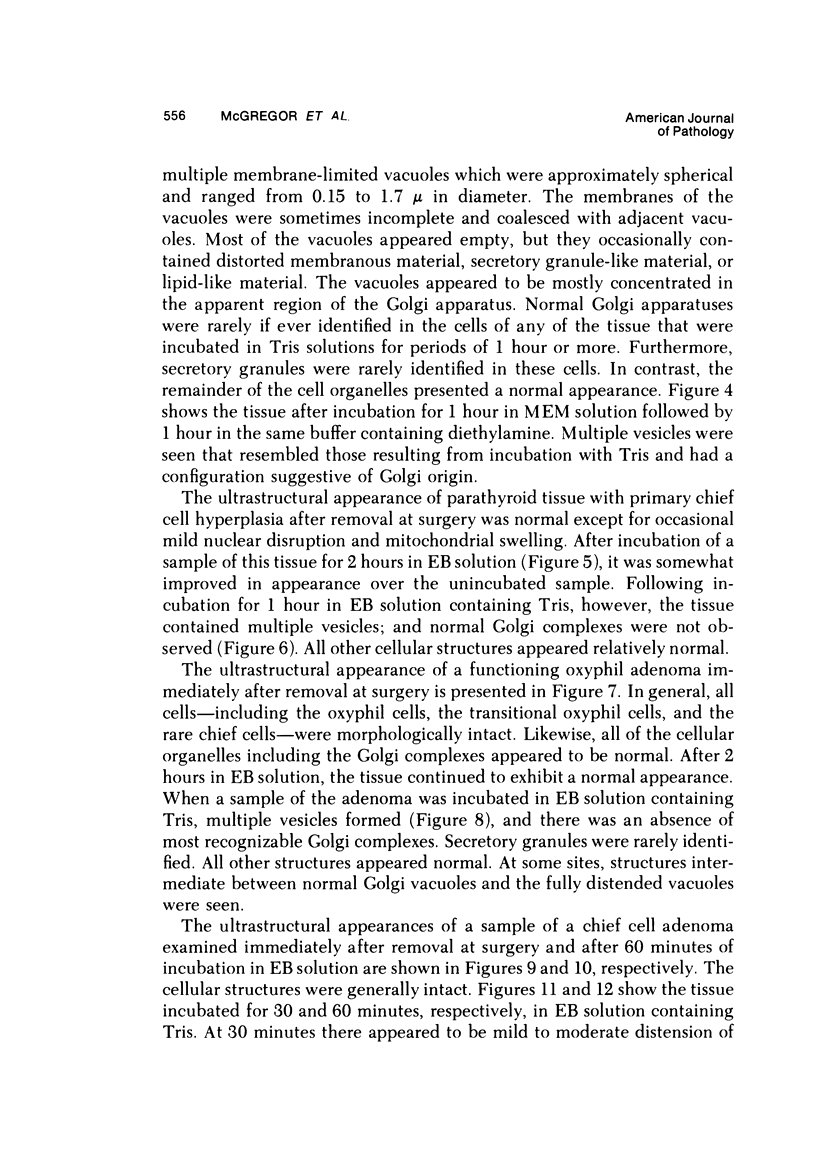
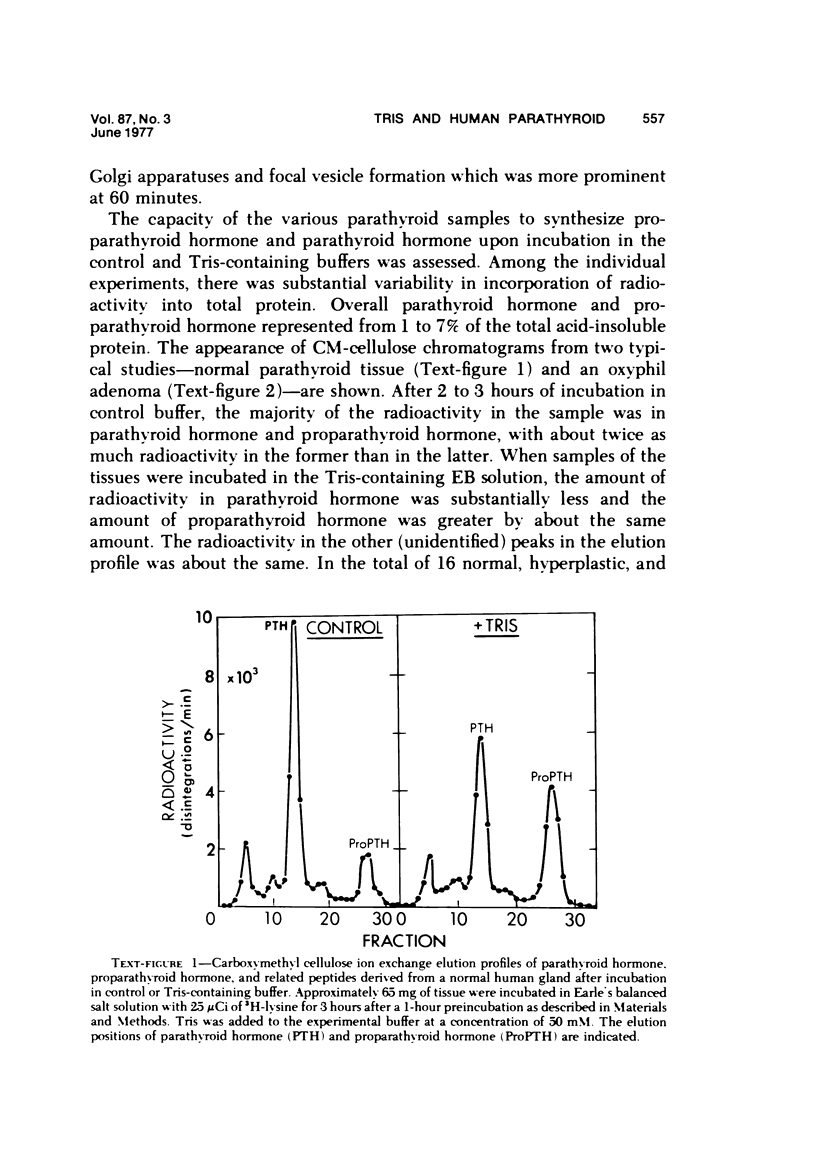
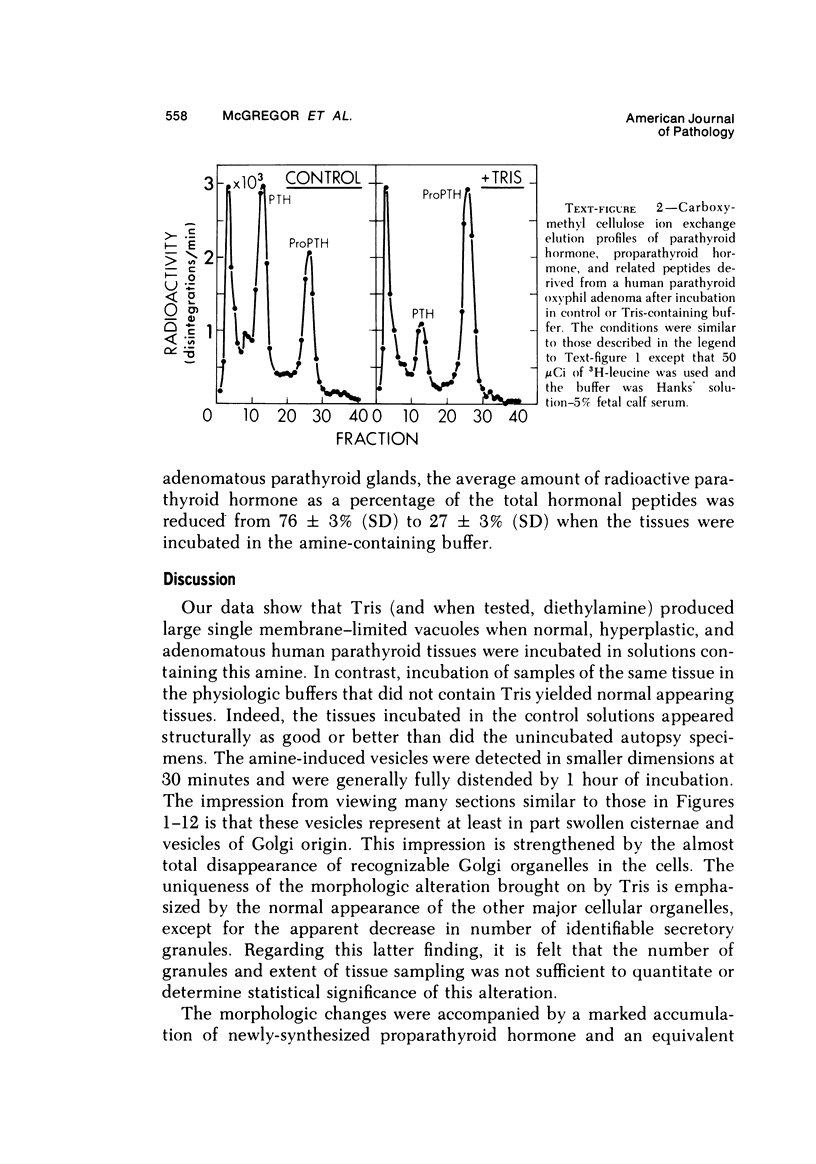
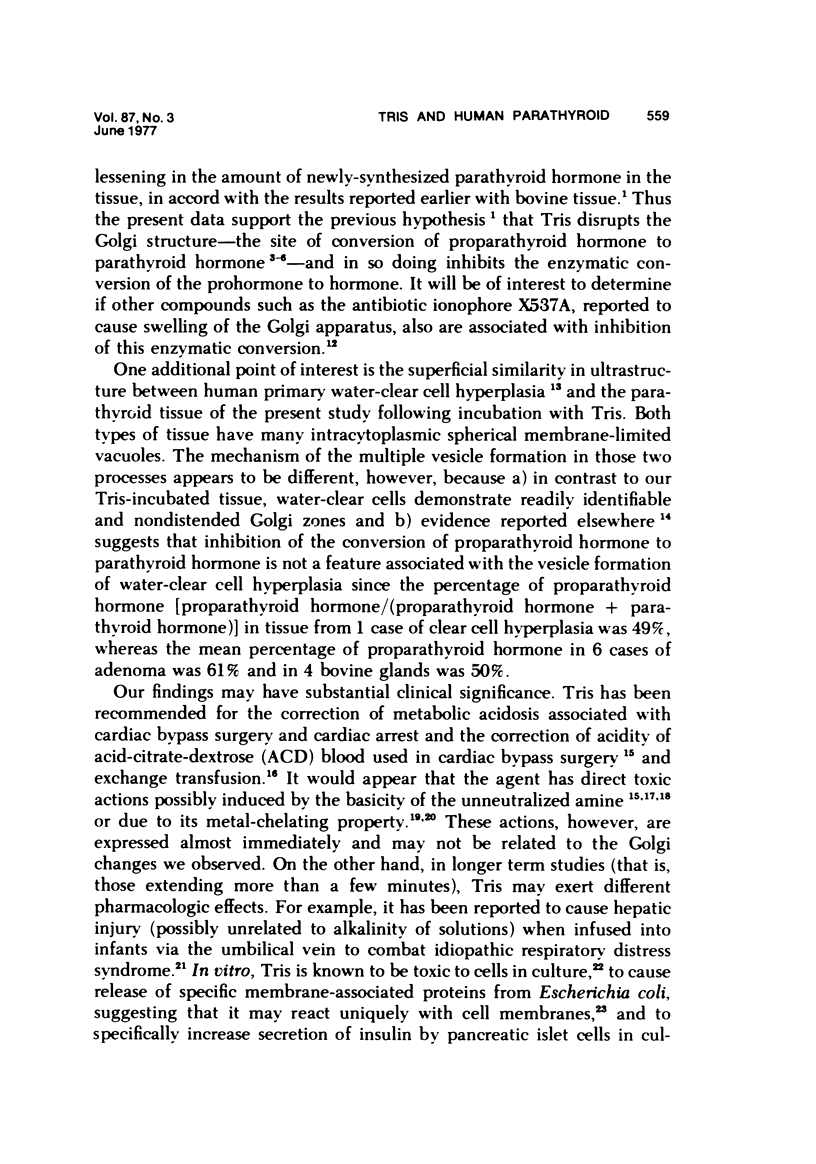
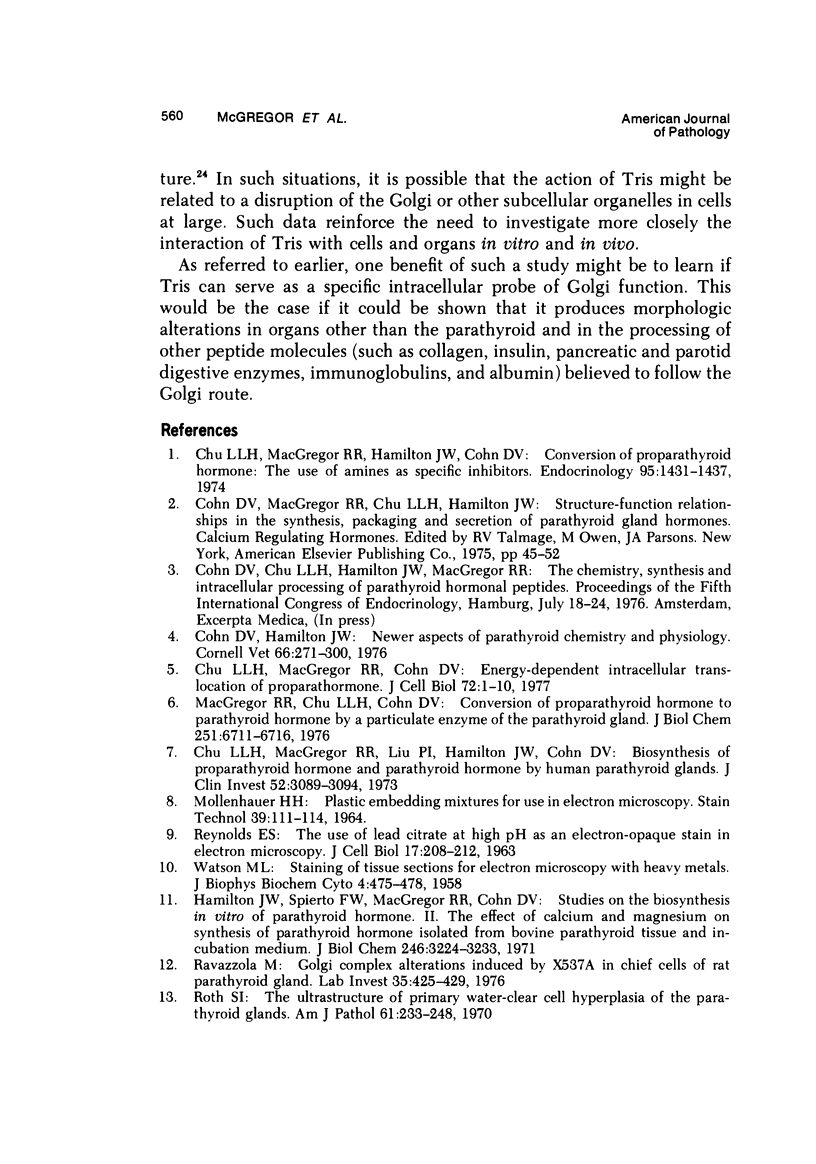
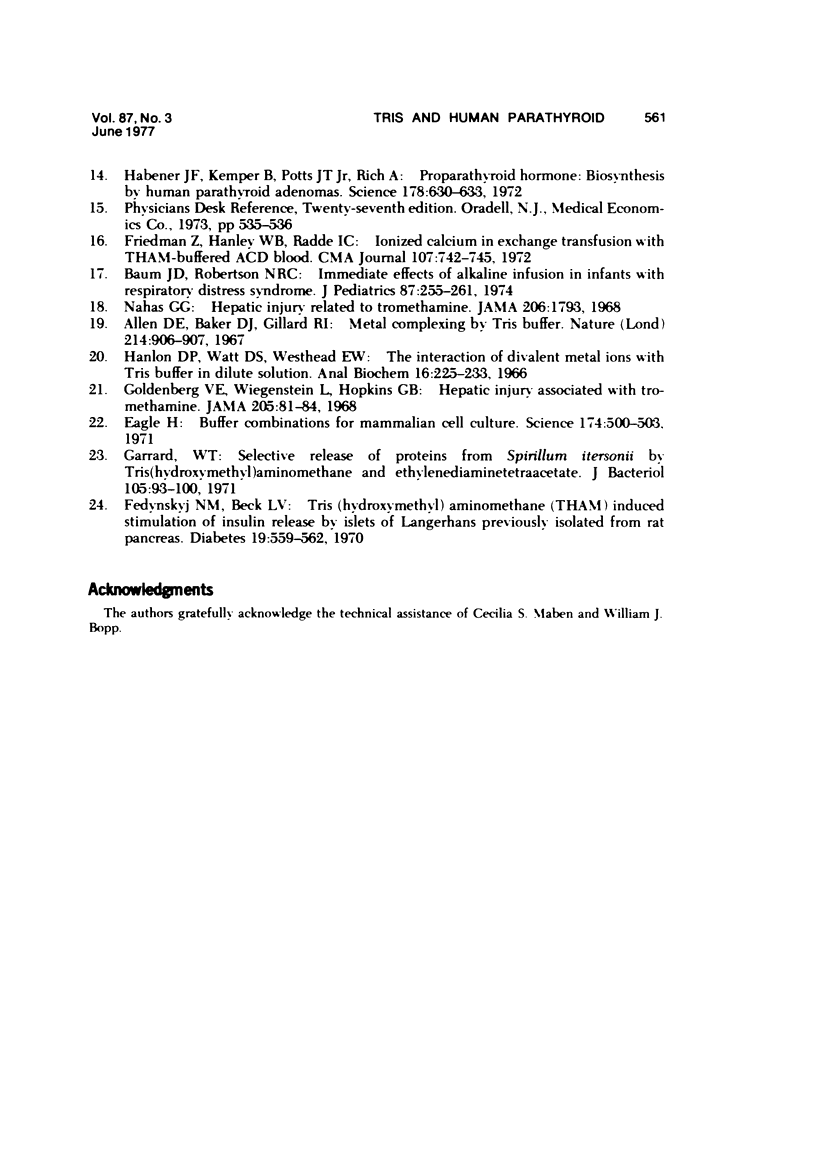
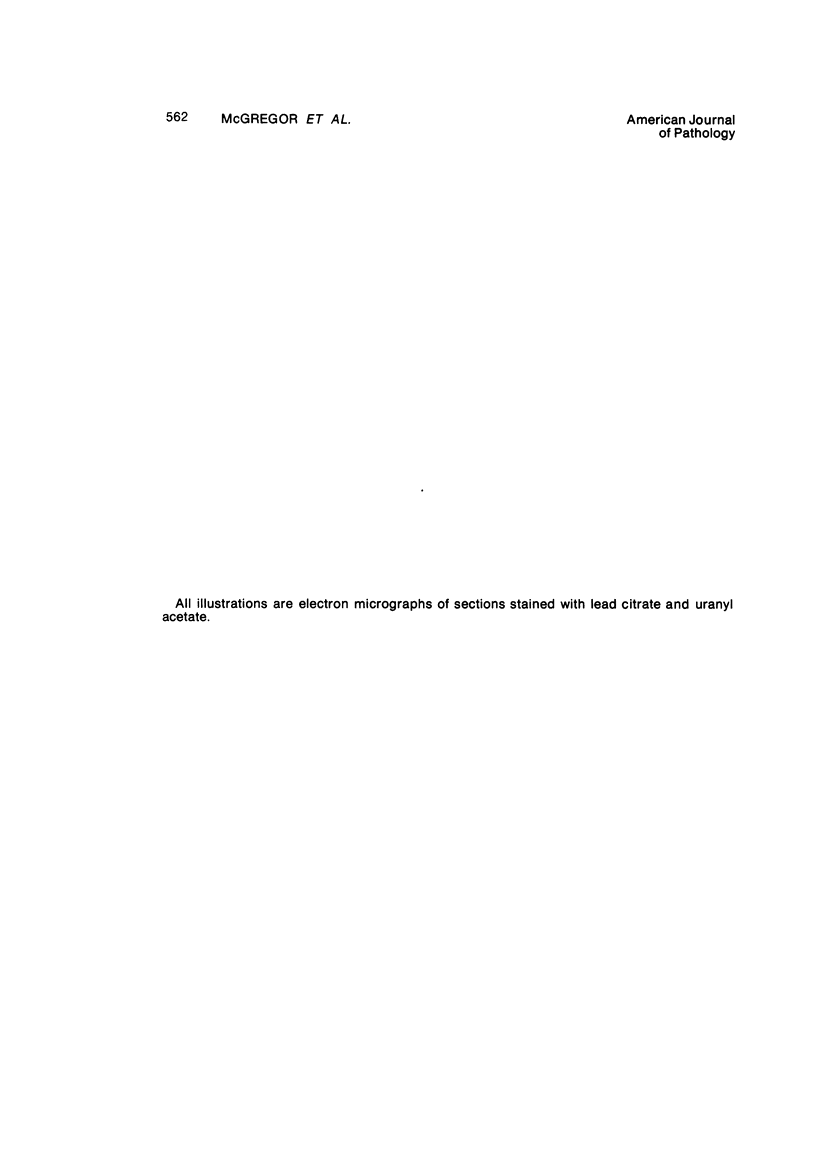
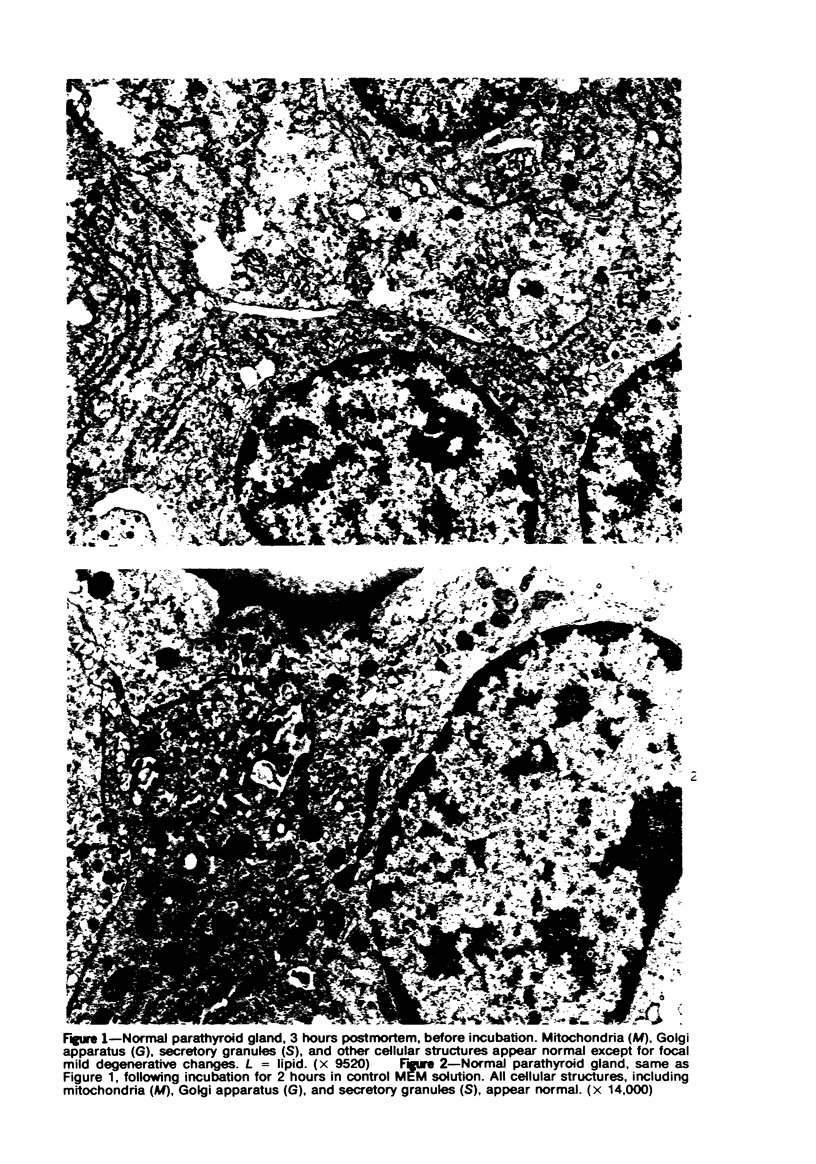
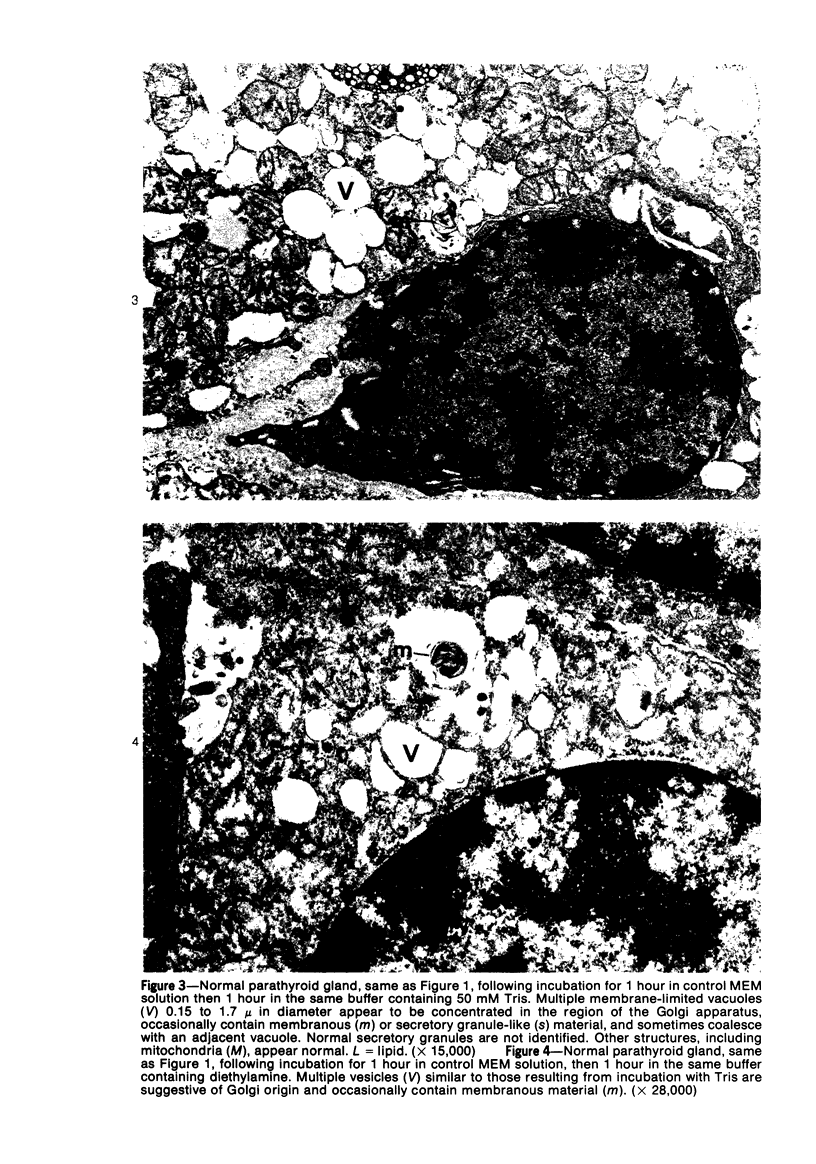
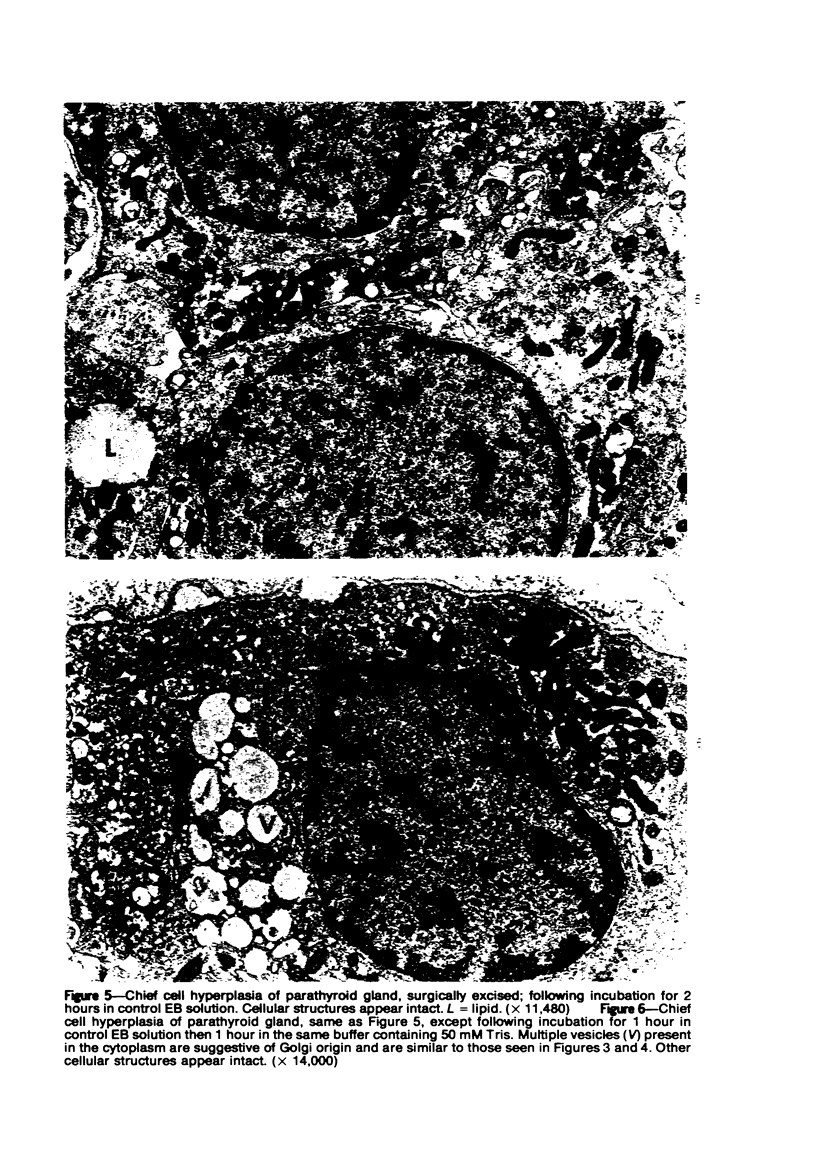
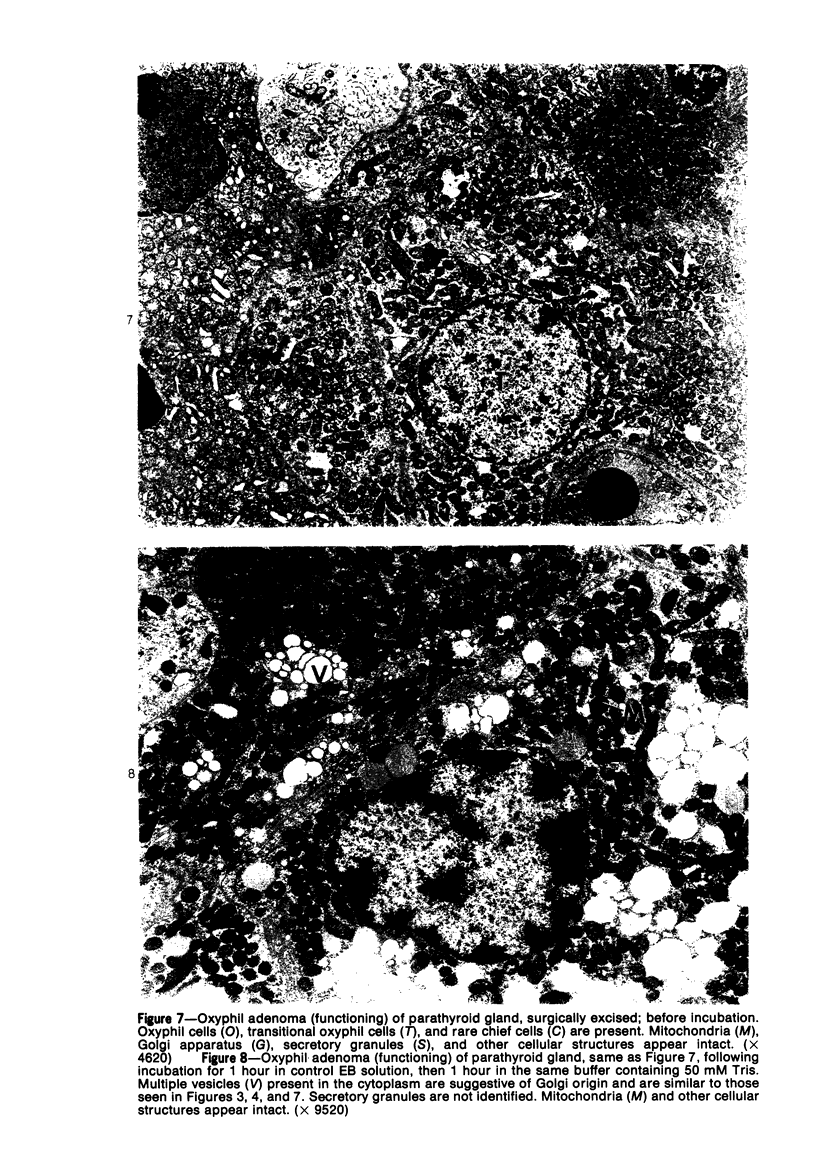
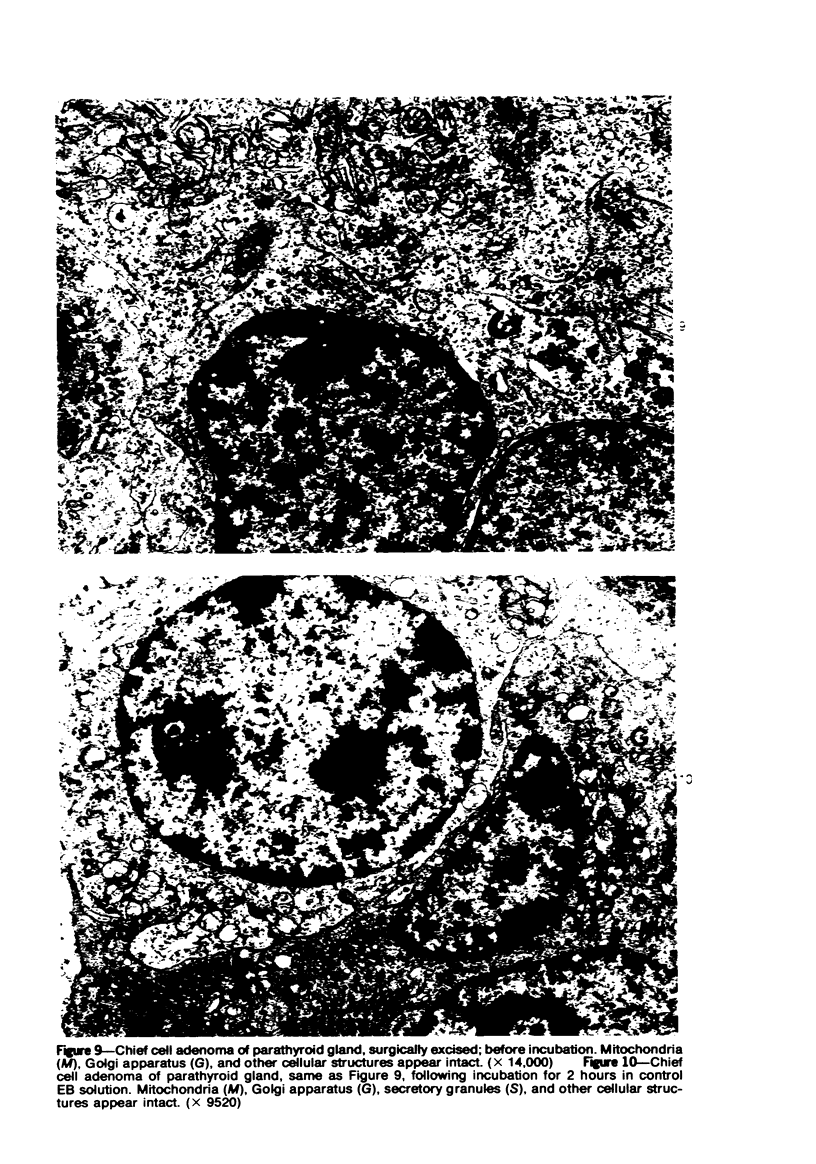
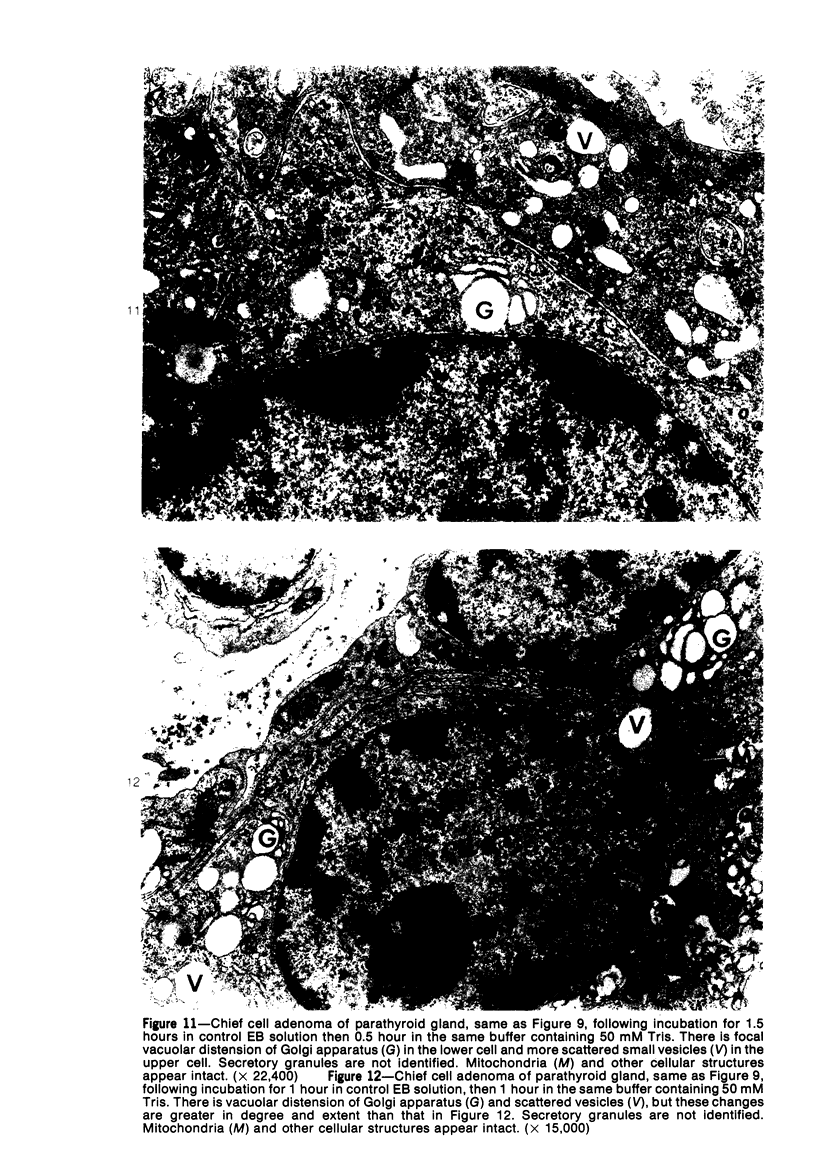
Images in this article
Selected References
These references are in PubMed. This may not be the complete list of references from this article.
- Baum J. D., Robertson N. R. Immediate effects of alkaline infusion in infants with respiratory distress syndrome. J Pediatr. 1975 Aug;87(2):255–261. doi: 10.1016/s0022-3476(75)80597-x. [DOI] [PubMed] [Google Scholar]
- Chu L. L., MacGregor R. R., Cohn D. V. Energy-dependent intracellular translocation of proparathormone. J Cell Biol. 1977 Jan;72(1):1–10. doi: 10.1083/jcb.72.1.1. [DOI] [PMC free article] [PubMed] [Google Scholar]
- Chu L. L., MacGregor R. R., Liu P. I., Hamilton J. W., Cohn D. V. Biosynthesis of proparathyroid hormone and parathyroid hormone by human parathyroid glands. J Clin Invest. 1973 Dec;52(12):3089–3094. doi: 10.1172/JCI107508. [DOI] [PMC free article] [PubMed] [Google Scholar]
- Chu L. L., Macgregor R. R., Hamilton J. W., Cohn D. V. Conversion of proparathyroid hormone to parathyroid hormone: the use of amines as specific inhibitors. Endocrinology. 1974 Nov;95(5):1431–1438. doi: 10.1210/endo-95-5-1431. [DOI] [PubMed] [Google Scholar]
- Cohn D. V., Hamilton J. W. Newer aspects of parathyroid chemistry and physiology. Cornell Vet. 1976 Jul;66(3):271–300. [PubMed] [Google Scholar]
- Eagle H. Buffer combinations for mammalian cell culture. Science. 1971 Oct 29;174(4008):500–503. doi: 10.1126/science.174.4008.500. [DOI] [PubMed] [Google Scholar]
- Fedynskyj N. M., Beck L. V. Tris (hydroxymethyl) aminomethane (THAM) induced stimulation of insulin release by islets of Langerhans previously isolated from rat pancreas. Diabetes. 1970 Aug;19(8):559–562. doi: 10.2337/diab.19.8.559. [DOI] [PubMed] [Google Scholar]
- Friedman Z., Hanley W. B., Radde I. C. Ionized calcium in exchange transfusion with THAM-buffered ACD blood. Can Med Assoc J. 1972 Oct 21;107(8):742–745. [PMC free article] [PubMed] [Google Scholar]
- Garrard W. T. Selective release of proteins from Spirillum itersonii by tris (hydroxymethyl) aminomethane and ethylenediaminetetraacetate. J Bacteriol. 1971 Jan;105(1):93–100. doi: 10.1128/jb.105.1.93-100.1971. [DOI] [PMC free article] [PubMed] [Google Scholar]
- Goldenberg V. E., Wiegenstein L., Hopkins G. B. Hepatic injury associated with tromethamine. JAMA. 1968 Jul 8;205(2):81–84. [PubMed] [Google Scholar]
- Habener J. F., Kemper B., Potts J. T., Jr, Rich A. Proparathyroid hormone: biosynthesis by human parathyroid adenomas. Science. 1972 Nov 10;178(4061):630–633. doi: 10.1126/science.178.4061.630. [DOI] [PubMed] [Google Scholar]
- Hamilton J. W., Spierto F. W., MacGregor R. R., Cohn D. V. Studies on the biosynthesis in vitro of parathyroid hormone. II. The effect of calcium and magnesium on synthesis of parathyroid hormone isolated from bovine parathyroid tissue and incubation medium. J Biol Chem. 1971 May 25;246(10):3224–3233. [PubMed] [Google Scholar]
- Hanlon D. P., Watt D. S., Westhead E. W. The interaction of divalent metal ions with tris buffer in dilute solution. Anal Biochem. 1966 Aug;16(2):225–233. doi: 10.1016/0003-2697(66)90150-3. [DOI] [PubMed] [Google Scholar]
- MOLLENHAUER H. H. PLASTIC EMBEDDING MIXTURES FOR USE IN ELECTRON MICROSCOPY. Stain Technol. 1964 Mar;39:111–114. [PubMed] [Google Scholar]
- MacGregor R. R., Chu L. L., Cohn D. V. Conversion of proparathyroid hormone to parathyroid hormone by a particulate enzyme of the parathyroid gland. J Biol Chem. 1976 Nov 10;251(21):6711–6716. [PubMed] [Google Scholar]
- Nahas G. G. Hepatic injury related to tromethamine. JAMA. 1968 Nov 18;206(8):1793–1793. [PubMed] [Google Scholar]
- REYNOLDS E. S. The use of lead citrate at high pH as an electron-opaque stain in electron microscopy. J Cell Biol. 1963 Apr;17:208–212. doi: 10.1083/jcb.17.1.208. [DOI] [PMC free article] [PubMed] [Google Scholar]
- Ravazzola M. Golgi complex alterations induced by X537A in chief cells of rat parathyroid gland. Lab Invest. 1976 Nov;35(5):425–429. [PubMed] [Google Scholar]
- Roth S. I. The ultrastructure of primary water-clear cell hyperplasia of the parathyroid glands. Am J Pathol. 1970 Nov;61(2):233–248. [PMC free article] [PubMed] [Google Scholar]
- WATSON M. L. Staining of tissue sections for electron microscopy with heavy metals. J Biophys Biochem Cytol. 1958 Jul 25;4(4):475–478. doi: 10.1083/jcb.4.4.475. [DOI] [PMC free article] [PubMed] [Google Scholar]














